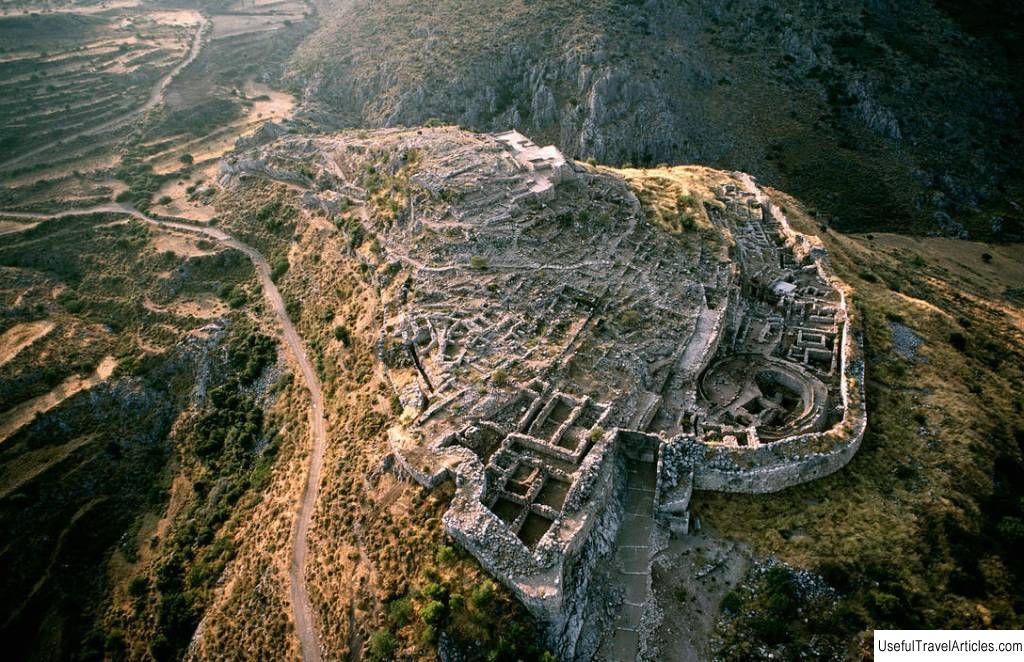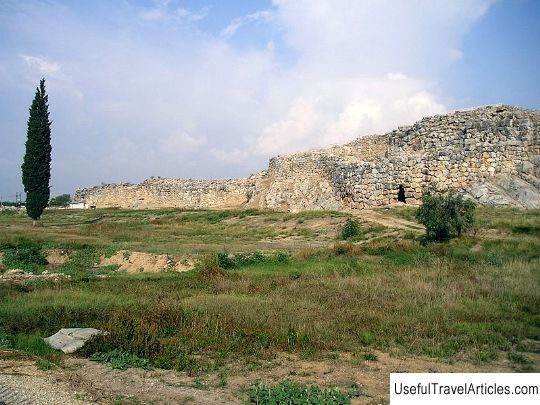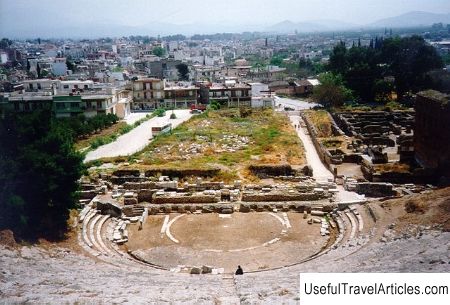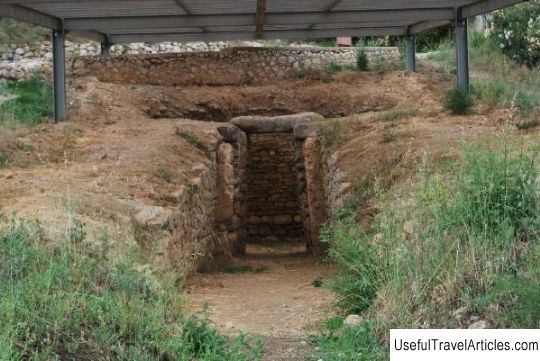Mykenes description and photos - Greece: Peloponnese
Rating: 7,8/10 (1243 votes) 
Mykenes description and photos - Greece: Peloponnese. Detailed information about the attraction. Description, photographs and a map showing the nearest significant objects. The name in English is Mykenes. Photo and descriptionThe Mycenaean (Achaean) civilization (1600-1100 BC) is one of the oldest and most interesting civilizations that ever existed on the territory of modern Greece. This civilization had an undeniable influence on the subsequent development of ancient Greek culture and occupies a special place in literature and mythology, including in the writings of Homer. One of the largest and most important centers of the Mycenaean civilization, of course, was the ancient city of Mycenae. from which, in fact, the culture subsequently got its name. It also housed the royal residence, as well as the tombs of the Mycenaean kings and their entourage. In ancient Greek mythology, Mycenae is well known as the kingdom of the famous Agamemnon, who led the legendary Trojan War. The ruins of the once majestic Mycenae lie about 90 km southwest of Athens in the northeastern part of the Peloponnese next to the small village of the same name and today are an important archaeological and historical monument. History of archaeological excavationsThe first excavations of ancient Mycenae were carried out back in 1841 by the Greek archaeologist Kirriakis Pittakis. It was then that the famous Lion Gate was discovered - a monumental entrance to the acropolis, built of four huge monolithic blocks of lime and got its name from the huge bas-relief depicting two lions above the entrance. The Lion Gate, as well as fragments of the impressive fortress walls (their width in some places reached 17 m), erected in the so-called "Cyclopean" masonry, are well preserved and even today, more than three thousand years later, they are striking in their monumentality. The real sensation was made by archaeological work, which began in the 1870s under the auspices of the Archaeological Society of Athens and the leadership of Heinrich Schliemann. During the excavations (both on the territory of the fortress and outside it), a number of burials were revealed in mine and domed tombs with an incredible amount of all kinds of funeral gifts, among which a huge number of various gold products were especially impressive. However, the architecture of the tombs was of great interest as well, perfectly illustrating the skill of ancient architects. The best preserved to this day, perhaps, are the tombs of Clytemnestra and Atreus. The tomb of the latter dates back to the XIV century BC. and is a two-chamber tomb with a corridor-dromos (length - 36 m, width - 6 m), leading to the domed room (where the king's body rested) with a small side chapel, in which a number of burials were also revealed. A huge 9-meter stone slab weighing about 120 tons was installed above the entrance to the tomb. How the ancient craftsmen managed to establish it is still a mystery. The Tomb of Atreus, or the Treasury of Atreus, is the most grandiose domed structure of that time and one of the most important architectural monuments of the Mycenaean civilization. In the following decades, archaeologists have repeatedly returned to the excavations of the legendary Mycenae and discovered many more different structures, including and the remains of a hilltop palace complex. Recently, the so-called "lower city" was also excavated. A detailed study of the results of archaeological excavations made it possible to significantly open the veil of secrecy over the mysterious Mycenaean civilization. The famous "Mycenaean gold" (including the so-called golden "mask of Agamemnon", XVI century BC), and also many other unique ancient artifacts found during the excavations of Mycenae are today kept in the National Archaeological Museum of Athens.             We also recommend reading Kubba Almoravid (Almoravid Koubba) description and photos - Morocco: Marrakesh Topic: Mykenes description and photos - Greece: Peloponnese. |




